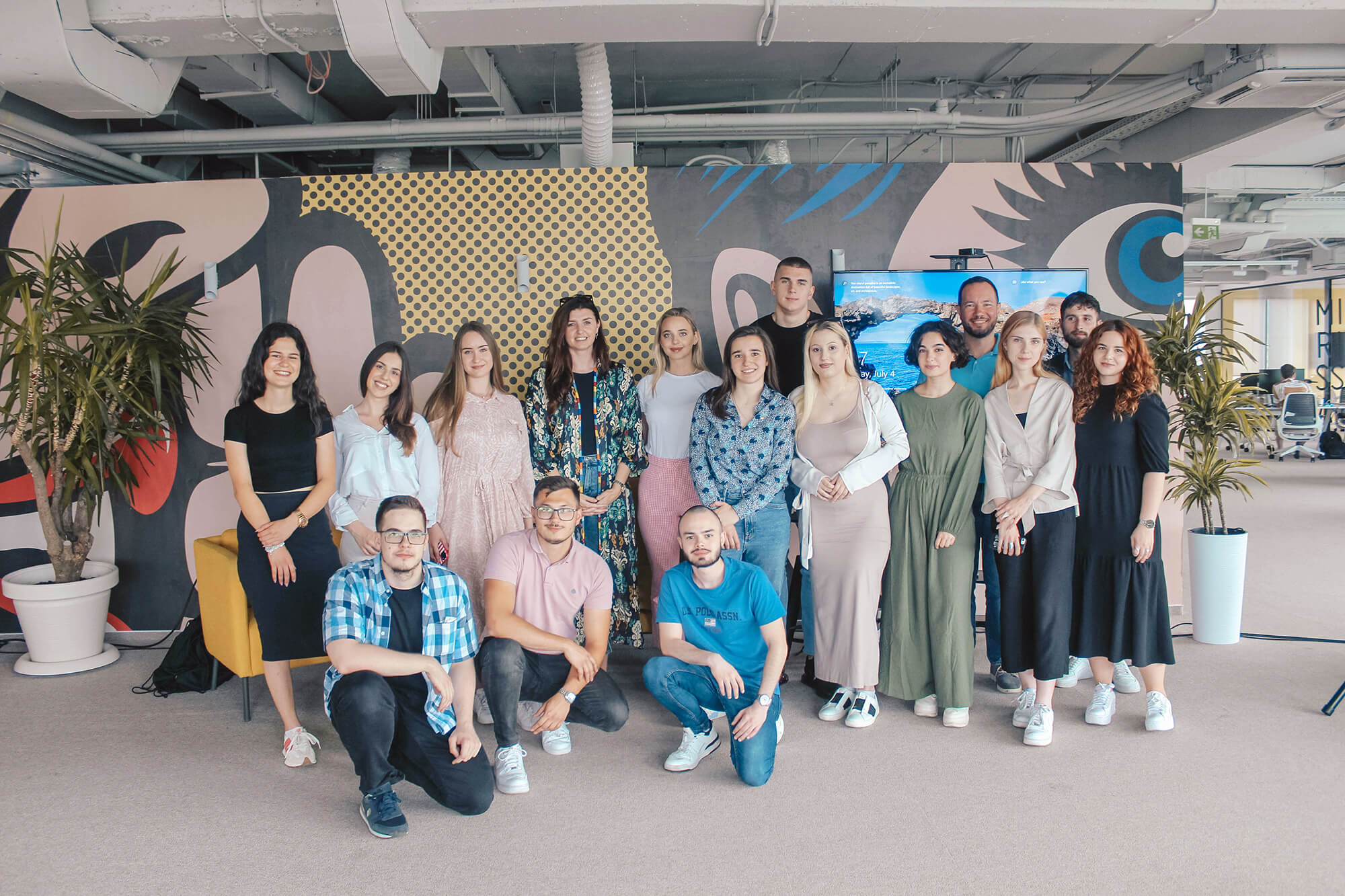July 07, 2023
Supporting education through meaningful collabs
We designed project-based learning opportunities with the Faculty of Fine Arts and the School of Economics and Business UNSA to help students develop competitive skills

Klika has always been seeking out opportunities to enable networking for students or building platforms where they can sharpen their skills to better prepare for the job market in their respective fields.
It is part of a greater philosophy Klika adheres to in terms of contributing to better community life in any possible way we can. Since education is a big part of every healthy society, we put a special focus on it, trying to strengthen formal education through our engagement and initiatives that bring closer educational institutions to the private sector, and thus, help students gain the best skills that make them fit for the job market.
Since we already have successfully set up collaborations and partnerships with Electrical Engineering faculties in the past and have already formalized some processes, this time, we decided to support students pursuing other professions that are still relevant for the IT industry - design and marketing. We partnered with professors from the Faculty of Fine Arts and the School of Economics and Business at UNSA to connect students to hands-on opportunities and show them what their jobs tomorrow might look like.

Last year, thanks to Prof. Jasna Mujkić, we got together with the Product Design Department of the Academy of Fine Arts UNSA (ALU UNSA) and worked out a plan under the guidance of Rusmir Arnanutović, Head of Design at Klika, to incorporate Product Design students into exciting projects to help them sharpen their skills. The first task students got was called Remote Work Setting which they designed in partnership with Klika designers. The collaboration continued into 2023 with the same enthusiasm, and two months ago, we came up with a bigger challenge for the students. In May 2023, they were given two tasks: design two mobile apps called Rate Your Uni and Volunteering.
UX/UI designers from Klika held an introductory presentation to familiarize students with the expectations and specifics, after which, students were given two months to complete the tasks and present their designs and research. 14 students participated, divided in 2 groups of 7, and two days ago, they proudly stepped in front of the Klika audience, their colleagues and Prof. Jasna Mujkić and presented their work at the Klika hub in Sarajevo.
One thing that is crucial to mention is that students were introduced to one of the most remarkable design tools today, Figma, and that they had a chance to use it, some of them for the first time, which is definitely a huge plus.
Throughout the two months, Klika designers (and developers) had regular feedback and mentorship sessions with the students, including the valuable comments and advice after their presentations. All in all, the collaboration spurred innovative solutions and high-quality functional designs that the students made. Opportunities like these are crucial while students are still learning and molding their skills: it raises their competitiveness in the design field tomorrow and the job market in general.

We also entered a similar collaboration with the School of Economics and Business in the past semester and had Marketing Management students in their junior year develop a marketing strategy for Klika as part of their Marketing Communication class led by Dr. Denis Berberović. Our Head of Marketing, Latifa Imamović, prepared a detailed set of requirements beforehand, including budget, the target audience, and goals, which gave students a clear overview of what they need to deliver. A total of 21 students were part of the project, divided in 5 groups. One of the highlights: they were joined by 3 sophomore students from the Academy of Fine Arts which is a great example of cross-collaboration between faculties, and we do not see that often in our education system, if ever. The 5 groups presented their results and strategies earlier this week and we saw some impressive thinking and excellent presentations. And while everyone did great, we had to pick a winner team, but it was a close race.

At the end of the day, we are happy to have once again given students a platform to show off their skills in the real world and work on real-life projects strengthening their capacities for the future and introducing them to industry professionals who they can learn a lot from. Such collaborations are also our way of saying that combining formal education with practical experience is key in strengthening the highly skilled labor force of tomorrow.
Industries
Expertise
Android
iOS
Java
Javascript
.Net
Ruby
Python
C/C++
Flutter
Angular
Blockchain
© 2025 Klika d.o.o.